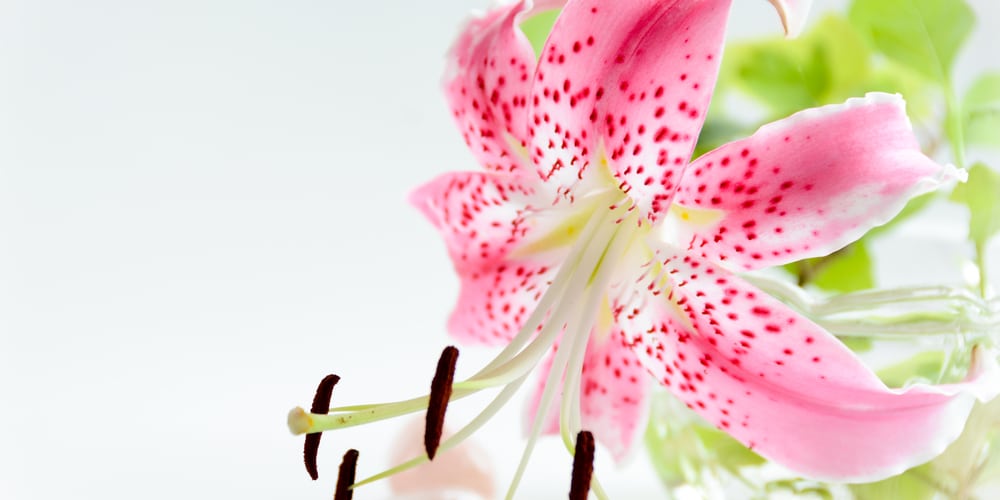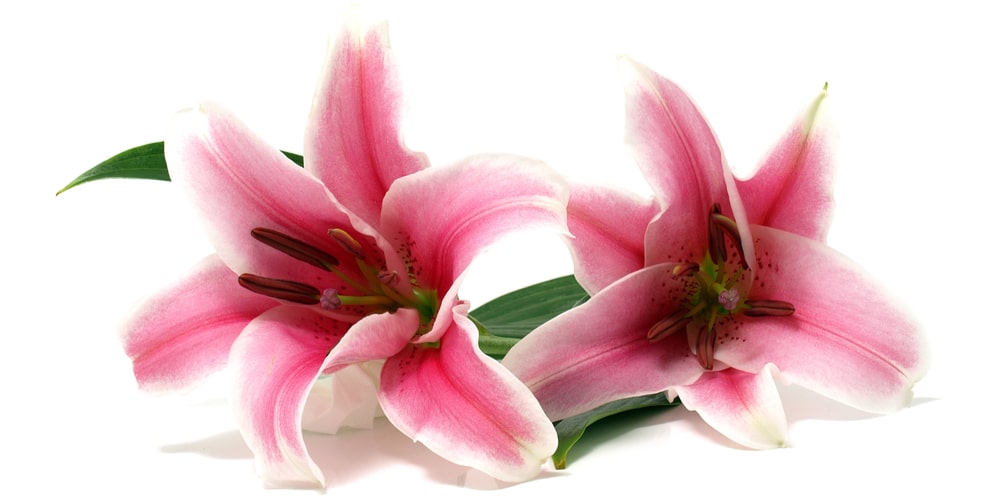The pink tiger lily is also known as the pink Lilium lancifolium and is a hybrid of the famous tiger lily. What makes this plant stand out among other lilies is its bright pink-colored flowers with outward-curling petals that are speckled with dark spots. If you want to make sure that your pink tiger lilies bloom in the summer, this article can be your guide.
The most common concern with Pink tiger lilies is dark spots (which we’ll cover in detail below). It doesn’t always mean a sign of fungal infection. Well, at least that is not the case with pink tiger lilies. Black spots on leaves are not pleasing to the eyes. Black spots on petals are attractive. In fact, these dark spots make pink tiger lilies uniquely beautiful.
What You Need to Know About Pink Tiger Lily
Since pink tiger lily is just one of the many variants of tiger lily, it shares the same characteristics and growth habits as the original orange tiger lily and its other variants as well.
The pink tiger lily is an herbaceous perennial that grows from bulbs. This means that while the stem, flowers, and leaves may wither in winter, the bulb will come back again in the summer and grow pink tiger lilies. The bulb is best planted during the autumn so that it will have well-established roots when spring comes.
Also, a little winter chill can benefit the bulb and produce big blooms in summer. But if you live in an area with harsh winters, your planting time is during the spring. Remember to only buy bulbs near planting time.
The pink tiger lily is best known for its bright pink-colored petals. As with other tiger lilies, their petals are beautifully designed with dark spots and are sharply curved backward.
The plant can grow 3 to 5 feet tall, and the flower measures about 5 inches. The foliage or leaves of the pink tiger lily are lanceolate and dark green in color. On the leaf axils, you’ll find black bulbils, which are the seeds. Pink tiger lilies are prolific growers. They are easy to grow, easy to care for, and easy to replicate. When you leave the seeds to ripen and fall to the ground, they will easily invade your garden.
Pink tiger lilies have a strong, sweet smell. The bulb and the flowers are also edible. They say you can bake the bulb just like you do with potatoes. They are also traditionally used as a form of medication.
But if you have a cat inside your house or cats usually visit your garden, make sure that they stay away from the pink tiger lily because the entirety of this plant is toxic to cats, but not to dogs. Your dogs are safe with pink tiger lilies.
How to Care for Pink Tiger Lily
Just because pink tiger lilies are prolific growers and are easy to care for doesn’t mean you just plant the bulbs anywhere and then wait for the plant to bloom with beautiful flowers in the summer. Pink tiger lilies have some requirements that you have to fulfill. When you provide them with their needs, only then will they grow and come back to you year after year. Here’s everything you need to know about growing and caring for a thriving pink tiger lily.
Light
Pink tiger lilies need full sun, but in hot climates, they can tolerate partial shade. If you want to plant the pink tiger lily in a pot, make sure that you place it in the area of your house that receives the most sunlight in the morning. Pink tiger lilies cannot tolerate the hot afternoon sun, so move them to a shaded area during this time. Pink tiger lilies only need 6-8 hours of full sun.
Water and Soil Needs
Even though pink tiger lilies are drought-tolerant, they require watering at least once a week. Water them twice a week when the flowers appear dry or wilted. The pink tiger lily plant needs a rich, loamy, moist, well-draining, and slightly acidic soil type.
Plants like fertile soil that can supply them with nutrients needed for them to bloom healthy and beautiful flowers. The soil should drain water moderately. Pink tiger lilies don’t like soil types that drain too slowly because a waterlogged area can rot its bulb. Add sand, moss, straw, or peat to improve the drainage of the soil. The soil pH should be 5.5 to 6.5. Put in acidifying fertilizer if needed.
Temperature Requirements
The pink tiger lily is dormant in autumn and winter. The bulb can actually stand icy soil in winter. Put 4 to 6 inches of mulch to delay ground freeze and allow the roots to keep growing.
When the earth becomes alive again after winter, the bulb will start to grow in spring and bloom in summer. With this, you can already tell that the pink tiger lily is a tough plant that can survive extreme weather conditions. Pink tiger lilies can survive in USDA Climate Zones 3 to 9. This means that pink tiger lilies can survive in temperatures as low as -40 degrees F in winter.
Fertilizer
Pink tiger lilies don’t require that much fertilizer. But if you plant them on poor soil, add compost to fertilize and improve the soil. You can also put mulch in the late spring so that the soil retains its moisture and cool temperature in the summer.
For alkaline soil, add acidifying fertilizer to reach the soil pH that the pink tiger lily wants. The best fertilizer to use on a pink tiger lily is a 5-10-5 fertilizer. This specific type of fertilizer has 5% nitrogen, 10% phosphorous, and 5% potassium.
Common Diseases
Lily mosaic virus is a common disease among tiger lilies, and the pink tiger lily is not an exception. Although this causes no harm to pink tiger lilies, they can cause leaf curl and blistering of foliage and bloom in hybrid tiger lilies.
Aphids are the main cause of this virus. As aphids feed on the pink tiger lily, it injects the virus into the plant. Red lily beetles are another common pest of the pink tiger lily. They munch on its leaves. Blast the plant with water to get rid of these pests.
Common Problems
Basal rot is a common problem among pink tiger lilies. The bulb serves as the powerhouse that brings the pink tiger lily to life during the summer. If your pink tiger lily fails to grow, something is wrong with your planted bulbs.
Remember that the bulbs don’t want a waterlogged area. The soil must be well-drained. If the bulb gets soaked in water, it can lead to rotting, and no pink tiger lily will grow in your yard in the spring.
Propagation
Pink tiger lilies can be propagated in two ways: by bulbing or by bulb division. Bulbing is an easy task. You just collect the bulbils in the leaf axils of the pink tiger lily plant and plant them in a pot. But it will take a year of growth before this seed begins to bloom. Here are the steps involved in properly propagating a pink tiger lily by bulb division:
1. When autumn comes and the foliage dies back completely, do not cut the stems at ground level. Leave at least 3 inches of stem so that you can easily pull the bulb from under the ground.
2. Measure out 4 inches around the pink tiger lily. Dig an 8-inch deep trench around it. Gently pry the bulbs up. Be careful when digging up the bulbs to avoid damaging them.
3. When you’ve lifted up the bulbs, gently remove any remaining soil on them. Separate the bulblets from the main bulb. Discard any damaged bulbs.
4. Choose the best planting site to transplant the bulblets and the main bulb. Plant the bulblets 3 inches deep and the main bulb 5 inches deep. The spacing should be 12 inches.
5. Lastly, water the transplanted bulbs.
Takeaways
Pink tiger lilies make a great addition to your garden. They are relatively easy to grow and require little care for them to bloom in the summer. You just have to make sure that they get enough sunlight, water, and soil nutrients. A well-drained soil type can avoid the rotting of the bulb.
When the leaves turn yellow in the fall, cut the stems at ground level if you have no intention of propagating them. Don’t miss the chance to enjoy the wonderful sight of pink flowers in your garden in the summer. Start caring for your pink tiger lily now!


